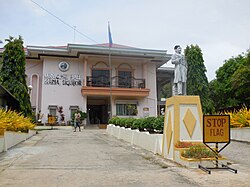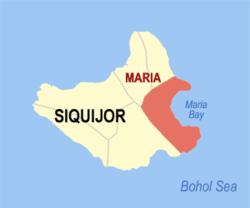
La Libertad, officially the Municipality of La Libertad, is a 3rd class municipality in the province of Negros Oriental, Philippines. According to the 2020 census, it has a population of 41,089 people.

Manjuyod, officially the Municipality of Manjuyod, is a 2nd class municipality in the province of Negros Oriental, Philippines. According to the 2020 census, it has a population of 44,799 people.

Siaton, officially the Municipality of Siaton, is a 1st class municipality and the southernmost settlement in the province of Negros Oriental, Philippines. According to the 2020 census, it has a population of 83,082 people.

Zamboanguita, officially the Municipality of Zamboanguita, is a 4th class municipality in the province of Negros Oriental, Philippines. According to the 2020 census, it has a population of 29,569 people.

Alcantara, officially the Municipality of Alcantara, is a 5th class municipality in the province of Cebu, Philippines. According to the 2020 census, it has a population of 16,910 people.
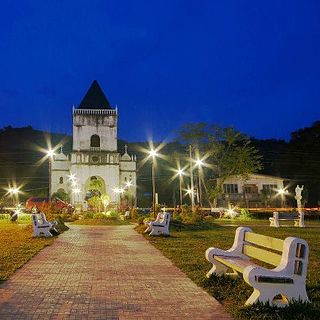
Alegria, officially the Municipality of Alegria, is a 4th class municipality in the province of Cebu, Philippines. According to the 2020 census, it has a population of 25,620 people.

Ronda, officially the Municipality of Ronda, is a 5th class municipality in the province of Cebu, Philippines. According to the 2020 census, it has a population of 21,005 people.

San Remigio, officially called the Municipality of San Remigio, is a 3rd class municipality in the province of Cebu, Philippines. According to the 2020 census, it has a population of 65,744 people.
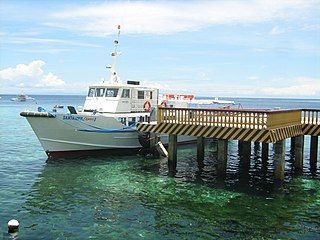
Santander, officially the Municipality of Santander, is a 4th class municipality in the province of Cebu, Philippines. According to the 2020 census, it has a population of 18,527 people.

Tabogon, officially the Municipality of Tabogon, is a 3rd class municipality in the province of Cebu, Philippines. According to the 2020 census, it has a population of 41,432 people.

Enrique Villanueva, officially the Municipality of Enrique Villanueva, is a 5th class municipality in the province of Siquijor, Philippines. According to the 2020 census, it has a population of 6,790 people.

Larena, officially the Municipality of Larena, is a 5th class municipality in the province of Siquijor, Philippines. According to the 2020 census, it has a population of 14,454 people.

Lazi, officially the Municipality of Lazi, is a 4th class municipality in the province of Siquijor, Philippines. According to the 2020 census, it has a population of 22,488 people.

San Juan, officially the Municipality of San Juan, is a 5th-class municipality in the province of Siquijor, Philippines. According to the 2020 census, it has a population of 16,363 people.
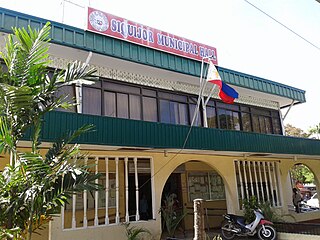
Siquijor, officially the Municipality of Siquijor, is a 4th class municipality and capital of the province of Siquijor, Philippines. According to the 2020 census, it has a population of 28,915 people.

Buenavista, officially the Municipality of Buenavista, is a 4th class municipality in the province of Bohol, Philippines. According to the 2020 census, it has a population of 29,711 people.

Clarin, officially the Municipality of Clarin, is a 5th class municipality in the province of Bohol, Philippines. According to the 2020 census, it has a population of 21,158 people.
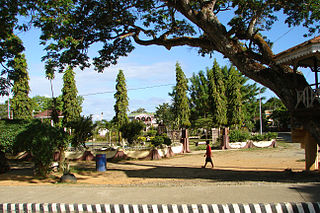
Getafe, officially the Municipality of Getafe and also spelled as Jetafe, is a 3rd class municipality in the province of Bohol, Philippines. According to the 2020 census, it has a population of 33,422 people.

President Carlos P. Garcia, officially the Municipality of President Carlos P. Garcia and alternatively known as Pitogo, is a 4th class municipality in the province of Bohol, Philippines. According to the 2020 census, it has a population of 23,625 people.

Bogo, officially the City of Bogo, is a 6th class component city in the province of Cebu, Philippines. According to the 2020 census, it has a population of 88,867 people.
